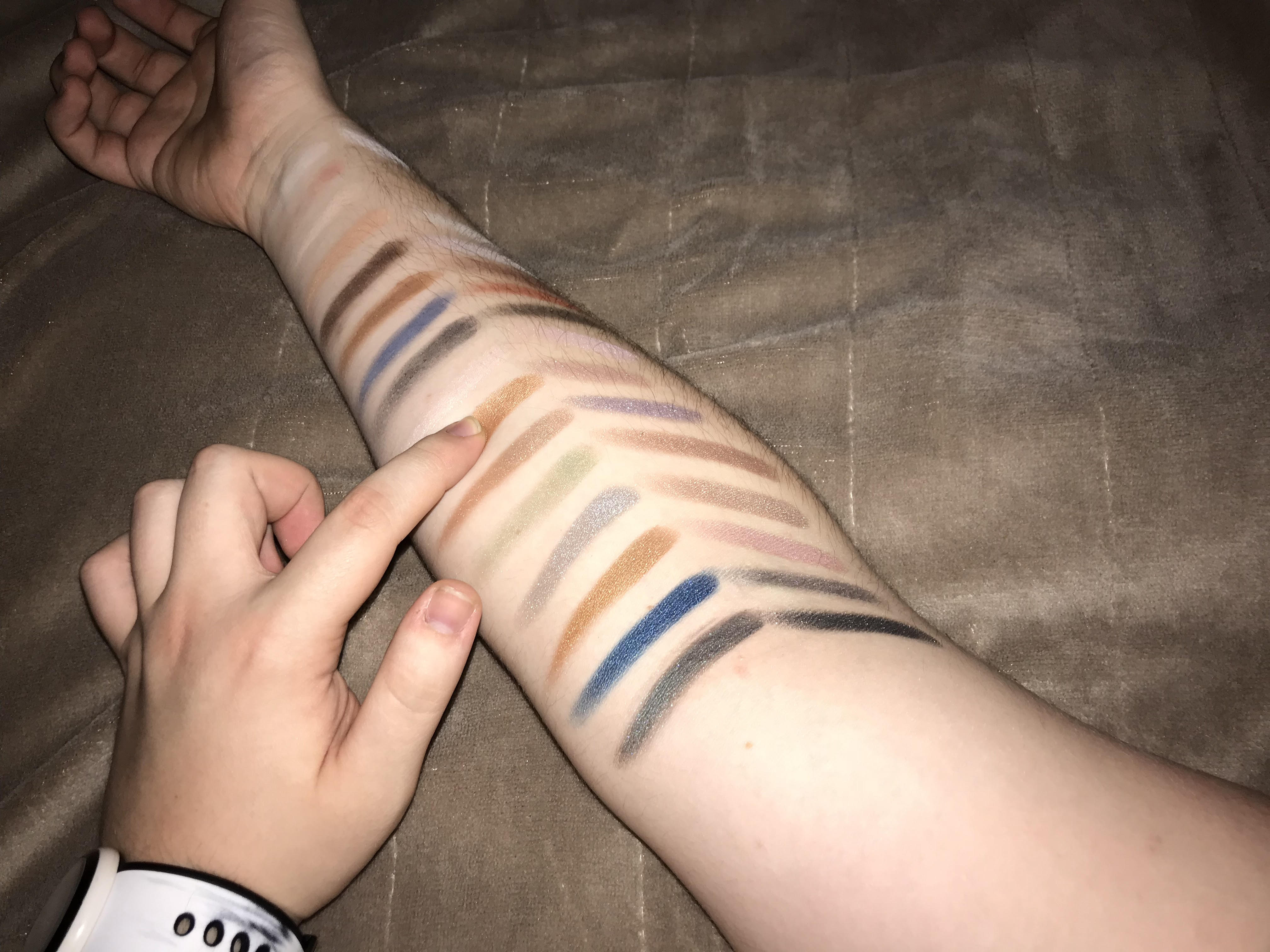Makeup has been known and advertised towards women as something that they can use to enhance or change their existing feminine features if they choose to do so. Makeup was originally used by both men and women until the Victorian era, where the use of makeup had shifted from both men and women to primarily women. This also brought along the notion that real men don’t wear makeup. By using compositional interpretation and content analysis, the answer to the question of whether or not there is a growing acceptance of male cosmetic use will be found.
Using compositional interpretation, there are a few main aspects to this image. First, the viewer sees the hands of a person, without knowing the gender, swatching various eyeshadow colors. Another aspect to this image is the fact that the person appears to be laying on a tan blanket while the photographer is above them, using flash to capture the image. This allows the viewer to focus more on the pigments that have been applied to this person’s forearm.
The most important and prominent aspect of this image is that the viewer does not actually know what the gender of the person is without the photographer stating it in the title. This is important because it brings to light the idea that it could possibly be a male doing the swatching, which is something that is becoming more popular with the help of social media platforms such as Instagram. Along with Instagram came with it the rise of male makeup use, including drag makeup and male makeup artists.
Instagram, being a major social media platform, is believed to be the starting place for the #makeupisgenderless movement. With this movement, people want to help raise awareness and acceptance of male cosmetic use. Using content analysis and a sampling of 1 image for every 50 images, it was noticed that there was a drastic difference between genders who supported the movement on Instagram. The main code that was used was the stated gender of the person who posted an image with the hashtag. It was found that a majority of the people who posted were males or identified as transgender. Though the posts were done primarily by men, there were still some women, businesses, and those who didn’t state their gender who posted as well, though not as often.
This was an interesting pattern to find, and it relates to the photo that is being analyzed fairly well. Being the fact that the person in the image was also male, it was interesting to see that a majority of this movement’s supporters were also males. While this photo shared one main similarity, there was still one significant difference between them. On Instagram, those who posted images supporting the movement often times showed their faces with different kinds of makeup applied. In the analyzed photograph, however, the same cannot be said. The image does not show the person’s face. This is crucial to the viewer’s understanding of the image, as it encourages them to re-think the societal belief that real men don’t wear makeup.
In conclusion, I disagree with the societal belief that men can’t wear makeup. Women have the choice to emphasize their features, and I think that men should be able to too. I, as the photographer, viewer and analyzer of this image, see this image as successful in helping my understanding of whether or not there is a growing acceptance of male makeup use. When I see this image I see that it is a male’s hands that are being used to swatch the eyeshadows onto his forearm. Even though there is a long way to go, I see that there is a slowly growing societal acceptance of male cosmetic use through social media platforms such as Instagram.

Commentary on Rachel Tanur's Works: Greek Temple Newlyweds